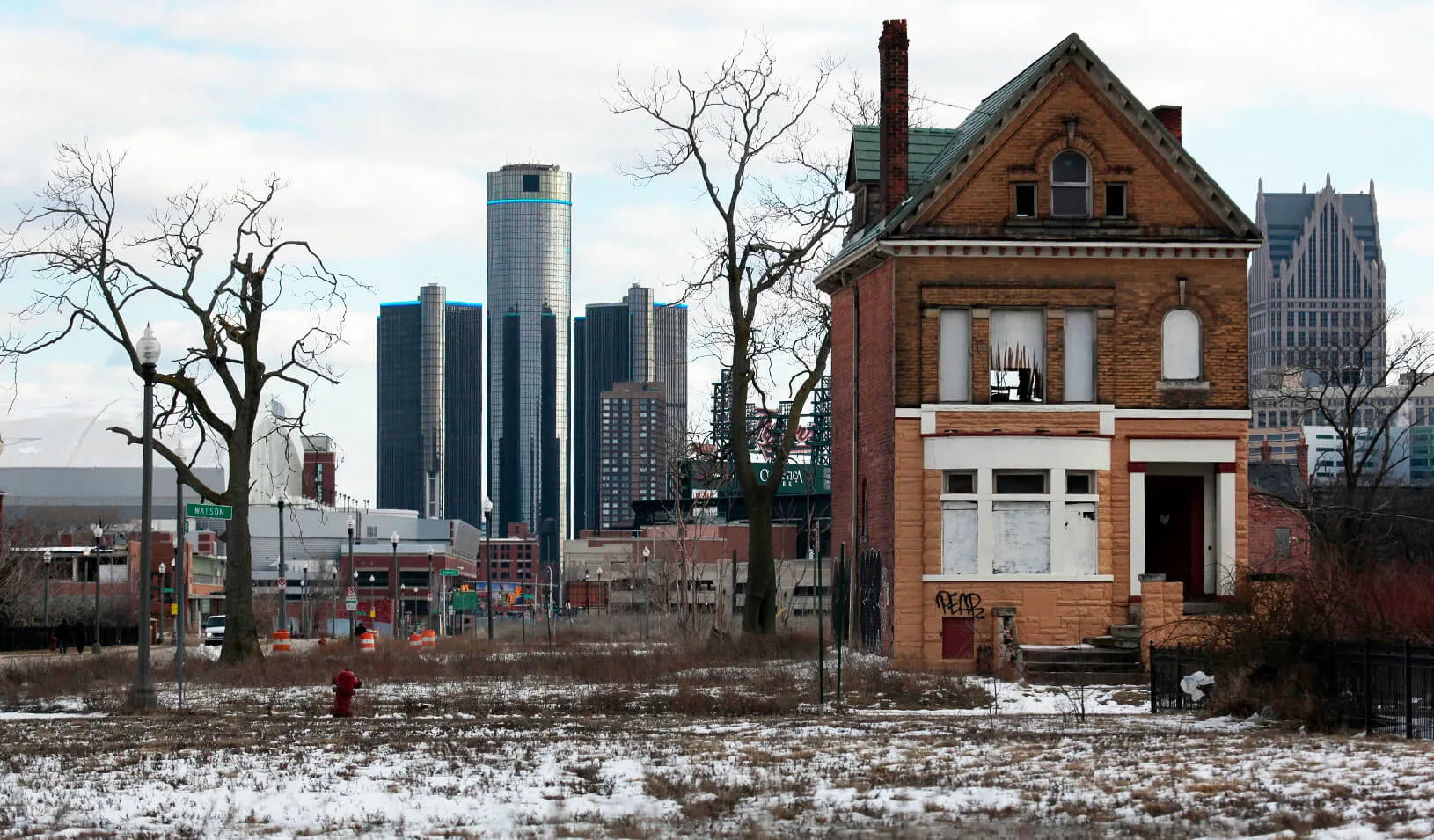Will “Opportunity Zones” Lift Neighborhoods Out of Poverty?
Stanford’s Rebecca Lester teams up with two graduate students to find out.
June 01, 2018

A provision in the new tax law could send investment dollars into low-income neighborhoods. | Reuters/Rebecca Cook
The $1.6 trillion tax cut that became law last December contained a sleeper provision that’s beginning to generate excitement across party lines, a rarity in today’s politics.
The obscure provision, which had bipartisan support, allows investors to reap big tax savings by re-investing cash from previous capital gains into low-income “Opportunity Zones.”
It’s not the first time that Congress has created tax incentives to attract investors to neighborhoods with high poverty, but Rebecca Lester at Stanford Graduate School of Business says this program could lure much more money than earlier efforts.
“One of the really distinctive features of this program is that it is so broad,” says Lester, an assistant professor of accounting who specializes in the impact of accounting and tax policies on investment and employment. “There’s no cap on the number of investors and few restrictions on what kinds of equity investments are eligible.”
The big question, Lester says, is whether the program actually helps low-income residents or simply enhances the profits of investors.
To that end, Lester and two graduate students — Hanna Tian and Cody Evans — have begun analyzing how the incentives work and mapping the demographic and economic characteristics of tracts now being designated as Opportunity Zones.
Under the law, states designated up to 25% of their low-income neighborhoods for the special incentives.
The Treasury Department will approve nearly 9,000 zones nationwide. California alone has nearly 800, and New York state has more than 500.
The basic idea is to attract investors who have big unrealized capital gains from stocks, real estate, or other investments.
Normally, investors have to pay a capital gains tax of up to 23.8% when they cash out.
Under the new law, however, those investors can defer paying capital gains taxes for years if they reinvest their profits in an Opportunity Zone. If they hold that investment for seven years, they get a 15% reduction on the original capital gains tax. If they hold it for 10 years, moreover, they won’t have to pay any tax at all on the profits generated from the Opportunity Zone. For a successful investment, that would add up to a major tax saving.
Selling Points
Lester and her students say the incentives have several striking features.
The first is that Congress did not limit the size of the program, or how much money people can invest using this incentive. That makes this quite different from an earlier program, the New Markets Tax Credit, which had a limited budget. In 2014, the Treasury Department approved only around 30% of applications for New Markets projects.
The second big feature is that investors can put their money into virtually any kind of equity investment they like, from startup companies and existing local businesses to new homes or factories. The main requirement is that the investment be inside one of the designated zones.
A third potential advantage is the minimal amount of red tape. In previous programs, projects had to go through lengthy processes of certification and approval. With Opportunity Zones, it’s widely expected that the Internal Revenue Service will let investors simply declare their in-zone investments on a form they file with their annual tax returns.
“Given the uncapped size of the program and the wide scope of investments, this incentive has the potential to be more successful than other more restrictive place-based policies,” says Hanna Tian, MBA ’19.
Zones’ Shortfalls
If the new zones do attract capital, one question is whether that money actually helps lift local residents out of poverty by improving their areas.
One risk, highlighted in previous academic research, is that the local area improvements could gentrify an area and drive out low-income residents. Indeed, a recent paper by the Brookings Institution suggests that some of the designated zones were already in the process of gentrifying. That means that investors may not even need any special incentives, but also that people in poverty could be squeezed out by new upscale housing.
Another risk is that investors put money into businesses that do little or nothing for low-income residents. One zone, for example, is just 3 miles from Palo Alto and well within Silicon Valley. If Google decided to build a new office annex there, it might only employ tech workers from outside the area and do little for existing residents who struggle to pay rent.
For Lester, that makes Opportunity Zones a fascinating real-life experiment that could provide valuable insights on poverty-reduction strategies for years to come.
“The extent to which these projects actually help low-income residents will in some ways be a function of how local governments participate in directing the investment,” Lester says. “It will be up to the local governments to step up and say, ‘This is where you can have a real impact.’”
In the meantime, Evans and Tian are working to connect the dots between investment opportunities in distressed areas and people with capital to deploy.
To that end, the three are trying to build public awareness about the program, both by developing research on particular aspects and by building interactive maps of Opportunity Zones and additional tools for investors, policymakers, and other interested parties.
“People may find investment opportunities in their own backyards,” says Cody Evans, MBA ’19. “This can give an investor a chance to take some investment profits from Apple or Google and re-invest them in local area businesses.”
For media inquiries, visit the Newsroom.
Explore More

Tax Avoidance Has Become a Key Part of IPO Planning

Where Insider Trading Flourishes



